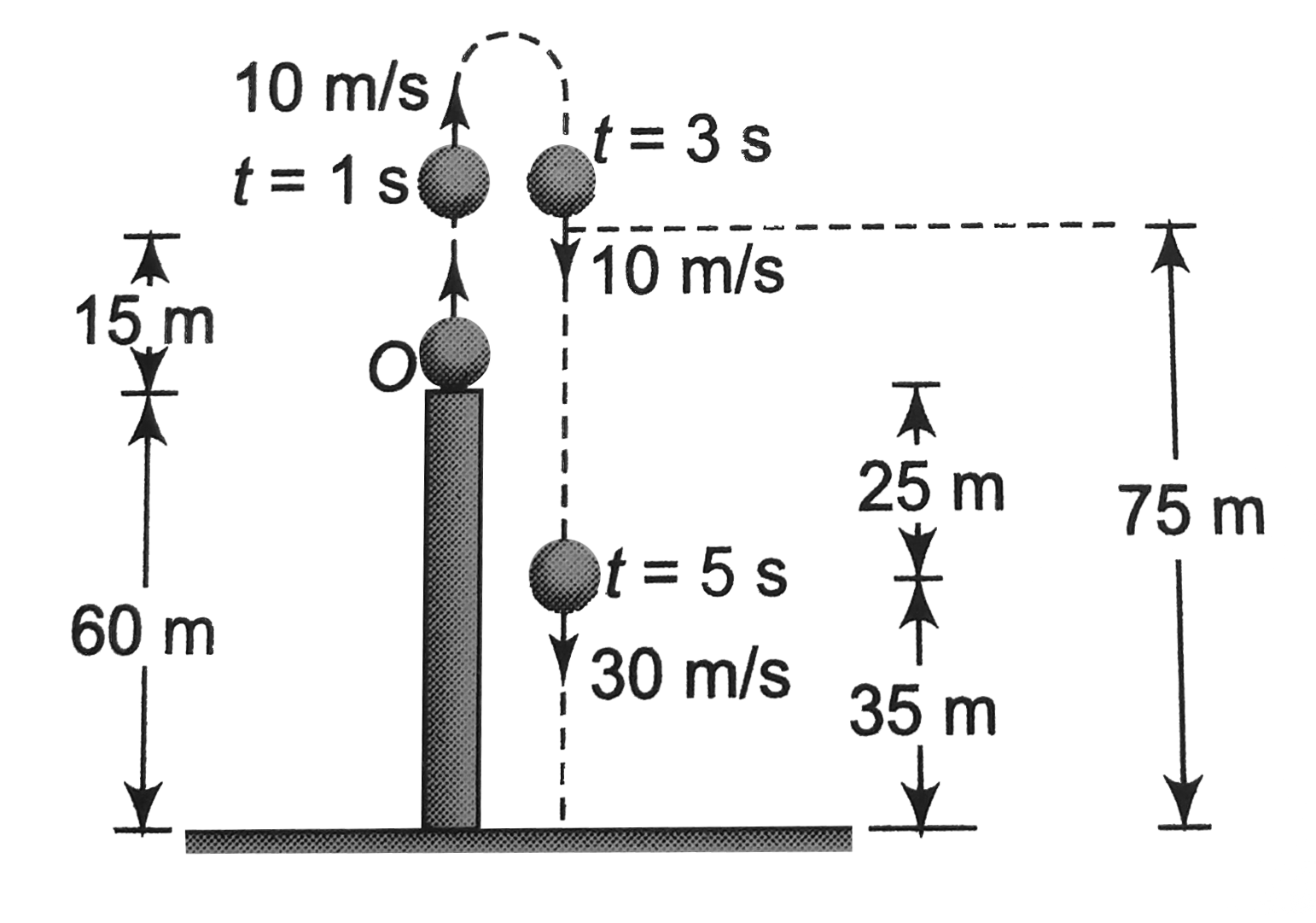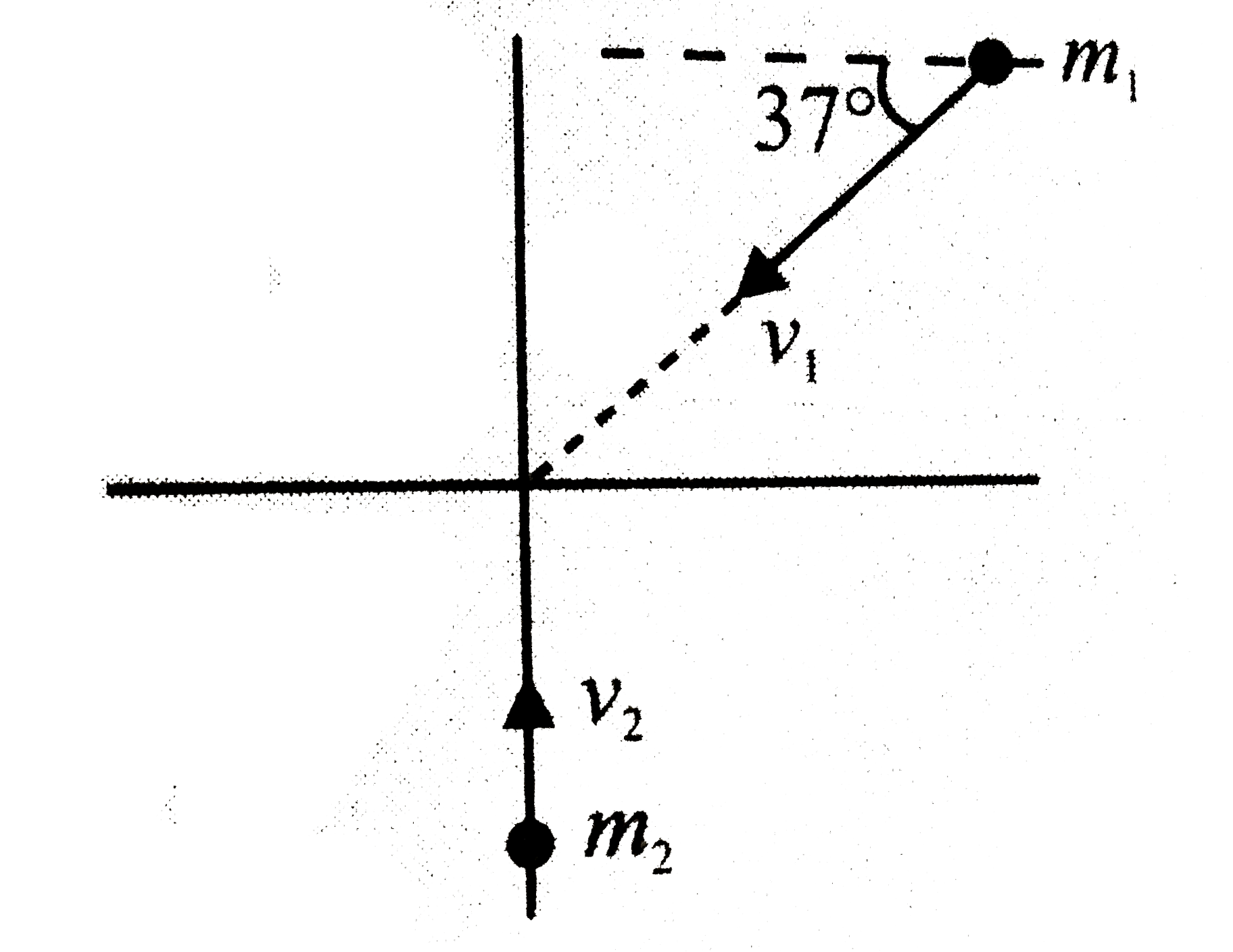In the previous problem, find the magnitude and direction of velocity after 1s,3s and 5s. Also find the distance of the ball from the ground at these instances.
Continuing from the previous problem,
v=u−gt=20−10t
h=ut−12gt2=10t−5t2
(h is the displacement from the origin)
At t=1s, v=20−10×1=10m/s, +ve velocity, i.e. ball is moving in upward direction.
At h=20×1−5×12=15m, +ve displacement, i.e. ball is 15m above the origin (top of the tower).
distance of ball above the ground =60+15=75m (Height of tower= 60 m)
At t=3s,v=20−10×3=−10m/s, -ve velocity, i.e. ball is moving in downward direction.
At h=20×3−5×32=15m, +ve displacement, i.e. ball is 15m above the origin.
Distance of ball above the ground=60+15=75m
At t=5s,v=20−10×5=−30m/s, -ve velocity, i.e. ball is moving in downward direction.
At h=20×5−5×56=−25m, -ve displacement, i.e. ball is 25m below the origin.
Distance of ball above the ground =60−25=35m

Topper's Solved these Questions
Similar Questions
The coordinates of a bird flying in the xy-plane are x=2−αt and y=βt2, where α=3.6m/s and β=1.8m/s2. Calculate 'the velocity and acceleration vectors and their magnitude as a functions of time .Also find the magnitude and direction of bird's velocity and acceleration at t=3.0s. From the given data can you find whether at this instant, bird is speeding up, speeding down or it is taking a turn. If so in which direction
View SolutionA ball is thrown horizontally with speed 20m/s from a tower of height 80m.
(a) After how much time and at what horizontal distance from the foot of tower it strikes the ground.
(b) Find the magnitude and direction of the velocity with which it strikes the ground.
( c) Find the velocity vector of ball after 1s.
(d) Trajectory followed by the ball.View Solution
Knowledge Check
- Question 1 - Select One
In the previous problem if the car is moving with a constant acceleration of 2m/s2, the ball will fall behind the person at a distance
A32mB64mC96mD16m - Question 2 - Select One
A ball falls from a height of 5 m and strikes a lift which is moving in the upward direction with a velocity of 1ms−1, then the velocity with which the ball rebounds after collision will be
A11ms−1 downwardsB12ms−1 upwardsC13ms−1 upwardsD12ms−1 downwards
A particle travels with constant speed along a circle of radius 3m and completes one revolution in 20s. Starting with the lowest point as origin, find (a) the magnitude and direction of the displacement vectors 5 s, 7.5s and 10 s later , (b) the magnitude and direction of the displacement in the 5 s interval from the fifth to the lenth second, (c) average velocity in this interval, (d) the instantaneous velocity at the begining and at the end of the interval.
View SolutionAn object is moving with a uniform acceleration. Its velocity after 5s 25 ms^(-1)andafter 8 sis34ms−1 Find the distance travelled by the object in 10 th second.
View SolutionAn observer standing between two cliffs fires a gun. He hears one echo after 1.5 s and another after 3.5 s. If the velocity of sound is 330 m s−1, find
(i) the distance of the observer from the first cliff
(ii) distance between the two cliffs.View SolutionIn the previous problem , if the collision is head - on elastic , find (a) the velocities of balls immediately after the collision and (b) the maximum height attained by eacl ball.
View SolutionAn observer standing between two cliffs fires a gun. He hears one echo after 1.5s and another after 3.5s. If the speed of sound is 340m/s, find.
(a) the distance of the observer from the first cliff and.
(b) distance between the cliffs.View SolutionTwo balls with masses m1=3 and m2=5kg have initial velocities v1=v2=5m/s in the directions shown in figure. They collide at the origin.
a. find the velocioty of the CM 3s before the collision.
b. Find the position of the CM 2s after the collision. View Solution
View Solution

